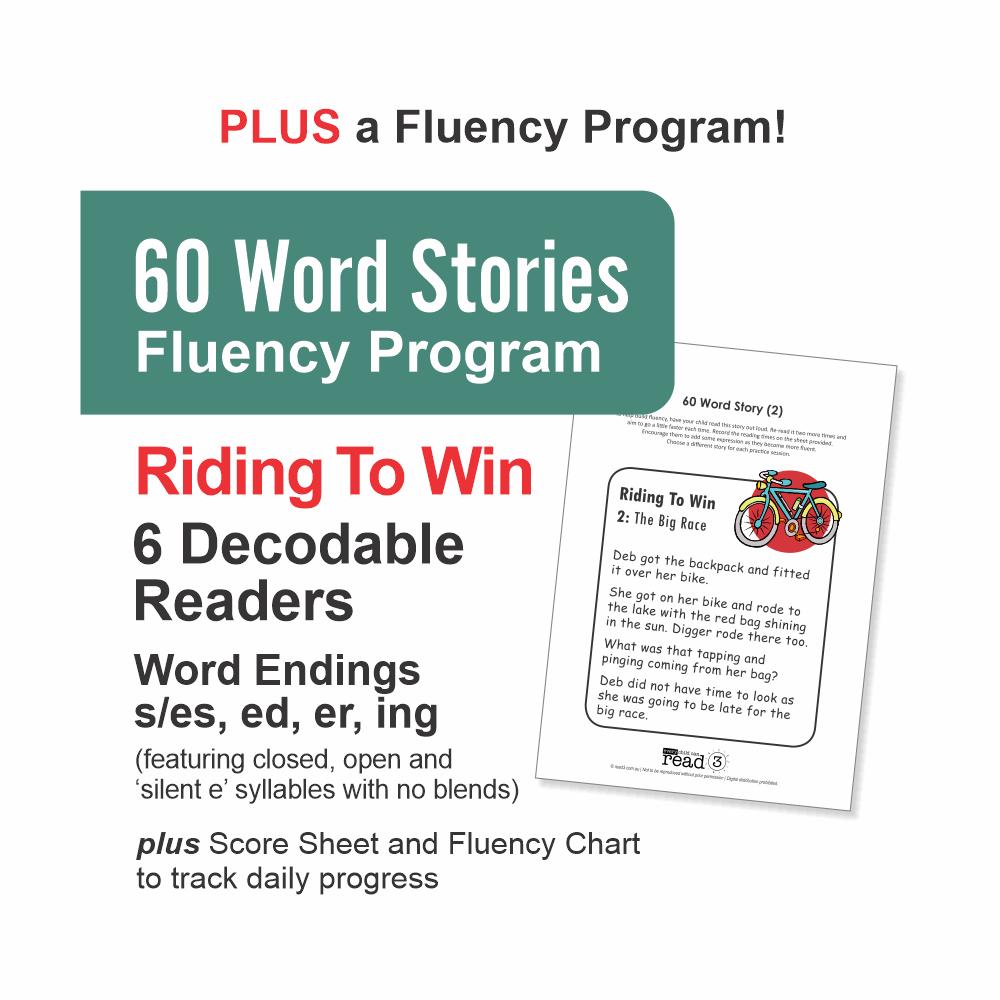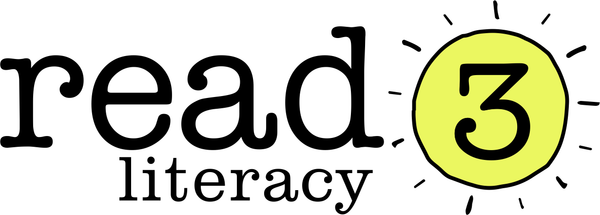Read3 literacy intervention program | Module 2 | Steps 1-3 | COMPLETE | Parent
Read3 literacy intervention program | Module 2 | Steps 1-3 | COMPLETE | Parent
Couldn't load pickup availability
In Complete Module 2, your child will start to gain a deeper understanding of the structure of English as they learn to hear the difference between vowel sounds in different syllable types and apply this knowledge to spelling patterns. They will explore two more of the six syllable types of English ('silent e' and 'open' syllables), start to read simple 2-syllable words and add word ending such as s, es, ed, er, ing.
Unlike other foundational programs, Module 2 does not include consonant blends at this stage. The focus is on teaching the structure of the language - syllable types and word endings (morphology) - with a focus on vowel patterns rather than additional consonants. This approach helps accelerate the child's ability to decode a wider range of words and the ongoing use of chunking supports children with phonological, working memory and rapid naming difficulties.
Read3 integrates systematic synthetic phonics instruction with targeted phonemic awareness and fluency training to build a strong reading foundation for your child. We use fun, multi-sensory activities and games to keep your child motivated and engaged.
For reading outcomes, a minimum of 5 sessions per week (20 minutes per session) is recommended. Children should then apply this learning for an additional 10 minutes a day using decodable readers. Extra practice with computer games and online resources is also provided for each step in the Curated Resources lists. Progress should be monitored daily to determine when your child is ready to move to the next step.
Estimated time to complete Module 2: 4-6 months (remembering mastery is the aim and every child is different)
IMPORTANT: By purchasing this product you agree to our Terms of Service. You will receive a Parent/Carer contract that is to be signed and returned. Failure to sign the contract will result in your access being paused.
What you receive in Module 2
Module 2 provides you with online access to:
- lesson videos where experienced speech pathologist Robyn Monaghan teaches you key concepts and strategies
- easy to follow session practice guides
- over 70 activities/games
- instructions and scripted lessons
- downloadable activity sheets and resources
- monitoring tools and record sheets

To make life super easy, and minimise the amount of printing needed, add a MODULE 2 CARD KIT to your order. The kit contains essential game cards, multi-sensory concept cards and a game board.
Content overview for Complete Module 2
There are 3 Steps in Module 2. These are:
- Step 1 : silent e' syllable (cape, dine, rode) - an easy syllable type that introduces children to long vowel names as a sound concept. It is also easy to learn, with just one spelling pattern.
- Step 2 : open syllable (he, she) and 2-syllable words (beside, pilot) - another easy syllable type that continues the long vowel name concept and is a frequent pattern in longer words. All 3 syllable types are practiced in 2 syllable words.
- Step 3 : word endings (s, es, ed, er, ing) - common word endings are introduced and applied to the 3 syllable types learned so far.
Our integrated approach means your child will be strengthening sound awareness, spelling patterns, reading and spelling accuracy and reading fluency within every practice session. Video lessons explore key concepts to build your understanding so you can assist your child with confidence. The program steps are sequential and skills development builds throughout the module. As a general guide, within each step your child will:
- practise unique reading and spelling strategies designed to support children with multiple processing difficulties
- fine-tune listening skills by identifying, deleting and/or substituting sounds in words
- strengthen letter-sound knowledge of new patterns
- start reading words with new syllable types
- start writing short sentences containing three syllable types
- build automatic recall of sound segments that occur naturally in our language and link them to spelling patterns for efficient reading and spelling recall
- build a bank of high-frequency words linked to lesson content
The Read3 Program works to strengthen three foundational skills needed for reading and writing. Developed by experienced Speech Pathologist Robyn Monaghan, the strategies have proven effective when teaching children with multiple processing difficulties including: poor phonological awareness, poor working memory, poor letter-sound knowledge and poor rapid automatic naming. Learn more about Read3.
Share












